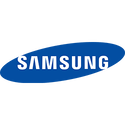Cellid Successfully Develops Compact Wide Micro Projector with Wider Field of View
Cellid Inc., a developer of displays and spatial recognition engines for next-generation AR glasses today announced the successful development of a micro projector for AR glasses capable of projecting AR images with a wide field of view (FOV) of 60°. This was previously considered difficult to achieve with conventional off-the-shelf products.
Currently, the AR glasses market is in its early stages, with adoption driven by practical information display applications such as notifications, weather updates, translations, and integration with generative AI. In these use cases, small and lightweight devices are expected to support initial market growth, as they can provide sufficient user value even with relatively narrow viewing angles.
Currently, the AR glasses market is in its early stages, with adoption driven by practical information display applications such as notifications, weather updates, translations, and integration with generative AI. In these use cases, small and lightweight devices are expected to support initial market growth, as they can provide sufficient user value even with relatively narrow viewing angles.






































































